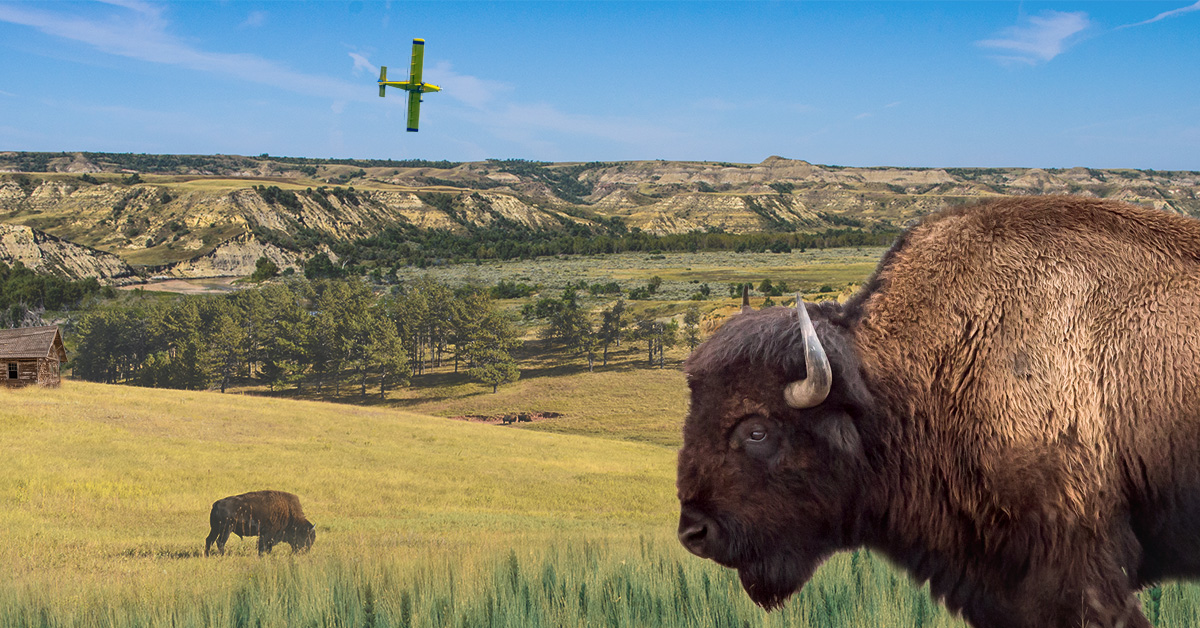Soybeans do, in fact, amount to more than a hill of beans. This was apparent when U.S. farmers were hurt by tariffs in the recent trade war with China. After all, the soybean is America’s No. 1 cash crop by acreage, due in part to how many soybeans China buys.
Soybeans, which look like peas and grow in pods, are used in tofu and soy sauce. Edamame is a type of soybean. It’s also used in many vegetable oils. Often, it’s converted to animal feed.
China’s retaliatory tariffs on soybeans hurt the Great Plains region that includes Iowa, Kansas, Missouri, Nebraska, Oklahoma, North Dakota and South Dakota. The majority of the U.S. soybean crop is produced in these states.
The states in this region also were hit hard by Chinese tariffs placed on pork. Iowa, Oklahoma, Missouri and Nebraska are each among the top 10 pork-producing states. Although tensions between the nations were easing this past winter, there’s still concern about how long it will take to normalize trade relations.

Energy production is another major industry for the Great Plains states. North Dakota was second in the nation in 2018 for crude-oil production with 461.5 million barrels, according to the U.S. Energy Information Administration. Oklahoma came in fourth with 200 million barrels while Kansas logged in at No. 11 with 34.7 million barrels.
Oil production is one of the reasons why North Dakota has seen so many people moving to the state in the past decade. The state added 90,000 people from 2010 to 2019, or 13% population growth, according to the U.S. Census Bureau. South Dakota added 70,000 residents in the same time frame, a growth rate of 8.7%.
Missouri and Kansas had limited population increases over those years. Missouri added 148,000 people for a 2.5% increase, while Kansas added 60,000 for a 2.1% increase. This growth lags behind the U.S. as a whole, which grew by 6.3% from 2010 to 2019.
From the start of the Great Recession through second-quarter 2019, North Dakota had the strongest annual growth rate for personal income among all states at 3.4%, according to The Pew Charitable Trusts. South Dakota and Nebraska were at 1.9% over that time. Iowa and Oklahoma at 1.7%, Kansas at 1.6% and Missouri at 1.5% ranked in the bottom third of the country for personal income growth.
There are 23 Fortune 500 companies headquartered in the Great Plains states. The largest of these companies is Berkshire Hathaway, which ranks No. 4 on the list and has 389,000 employees worldwide. The conglomerate headed by financier Warren Buffett is headquartered in Omaha, Nebraska.
Great Plains Home Prices
North Dakota claimed the top spot in the Great Plains region for highest median home value at $235,722 as of December 2019, according to Zillow. Oklahoma ranked last regionally with a median statewide value of $130,001. Each state in the region, however, ranked below the median U.S. home value of $244,054 at that time, Zillow reported.
In a separate sign of real estate market health across the region, North Dakota homes stayed on the market longest before being sold — an average of 95 days as of November 2019, Zillow reported. Nebraska had the shortest average listing period, with homes staying on the market only 58 days.

Homeowners in Oklahoma had the highest foreclosure and delinquency rates in the region as of October 2019, according to CoreLogic. In Oklahoma, 4.8% of homeowners were delinquent by 30 days or more, while the state had a foreclosure rate of 0.7%. Nationally, the delinquency and foreclosure rates at that time were 3.7% and 0.4%, respectively.
Focus: Telecommunications
One of the most watched business deals in the U.S. in the past year has been the $26.5 billion merger between T-Mobile and Sprint, the nation’s No. 3 and 4 wireless carriers. Sprint is headquartered in Overland Park, Kansas, a suburb of Kansas City. The company employed 26,000 people there 20 years ago, but only 6,000 employees worked at the campus this past summer. The U.S. Department of Justice gave approval for the deal last year with concessions that included Sprint selling a sizable chunk of its business to Dish Network. Thirteen states and the District of Columbia sued in federal court to prevent T-Mobile’s acquisition of Sprint. A decision was pending this past January as to whether the merger would go forward.
What The locals Say
“Kansas lost a lot of [soybean] contracts. Where did those go? Those went to Brazil. They went to these other countries. … To assume that things will just come back really does not give a lot of thought to what happened to other farmers in the global economy who got equipment and are producing more soybeans. They’re not going to switch over either. American farmers and people in this region will still have to compete based mostly on price. We’ll have a whole season where some farmers will overproduce and then it will take a whole other season for farmers globally to switch products, to kind of rebalance that market.”
 Jeremy Hill
Jeremy Hill
Director, Center for Economic Development and Business Research, Wichita State University
3 Cities to Watch
St. Louis

St. Louis is the largest metropolitan area in Missouri with 2.8 million residents, although it fell out of the top 20 largest metro areas in the U.S. in 2018 due to people moving out of the urban core. Still, the “Gateway to the West” is a major center of economic activity in the region with nine Fortune 500 companies in or near the city, including financial-services provider Edward Jones and cereal giant Post Holdings. The city’s median household income is $41,107.
Sioux Falls

The largest city in South Dakota with a population of 181,883 is a regional health care hub. The two largest employers in Sioux Falls are Sanford Health, which employees more than 9,500 people, and Avera Health, which employs more than 8,000. Sioux Falls lays claim as the city where one of the first four-door cars, the Fawick Flyer, was created. One of the largest music festivals in the U.S., the Christian LifeLight Festival, attracts 350,000 people each year to a farm south of town.
Oklahoma City

The Oklahoma state capital’s top three employers are state government (47,300 jobs); Tinker Air Force Base (24,000 jobs); and the University of Oklahoma, in nearby Norman (12,700 jobs). The region’s aerospace companies produce a combined $4.9 billion in goods, according to the Greater Oklahoma City Chamber. Fortune 500 companies headquartered in OKC include Devon Energy Corp. and Chesapeake Energy Corp. Median household income is $54,034.
Sources: American Soybean Association, CoreLogic, Farm Journal, Fortune, Greater Oklahoma City Chamber, Healthline, Kansas City Business Journal, KCUR 89.3, Politico, Sioux Falls Development Foundation, South Dakota Department of Tourism, South Dakota Public Broadcasting, St. Louis Post Dispatch, The Pew Charitable Trusts, The Wall Street Journal, The Washington Post, U.S. Bureau of Labor Statistics, U.S. Census Bureau, U.S. Energy Information Administration, Zillow








